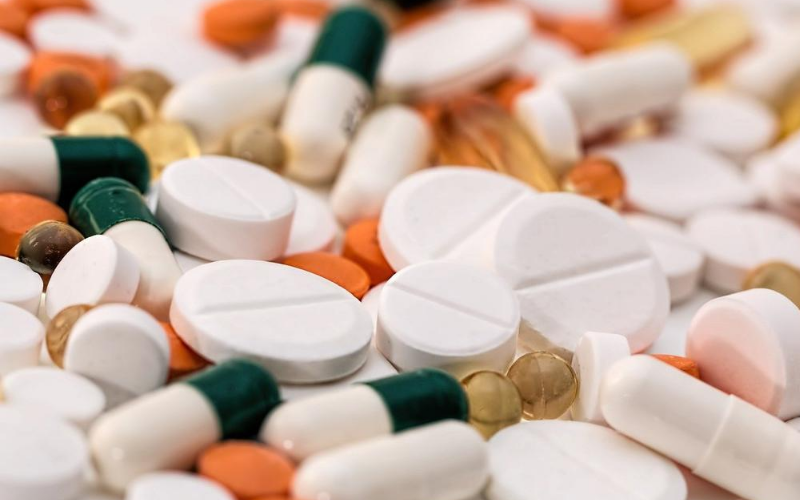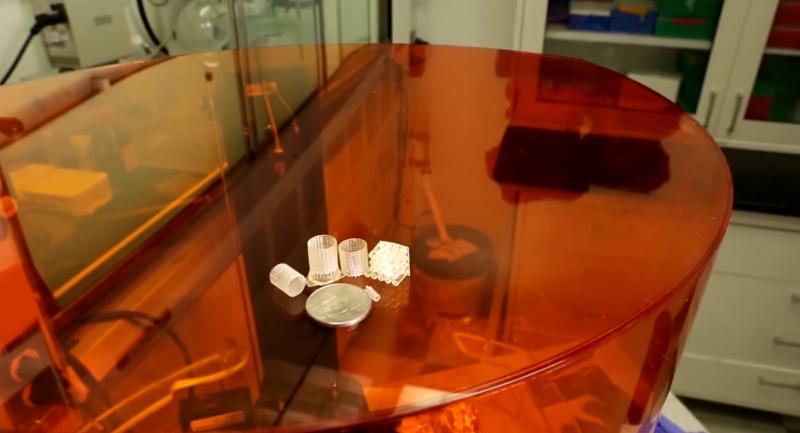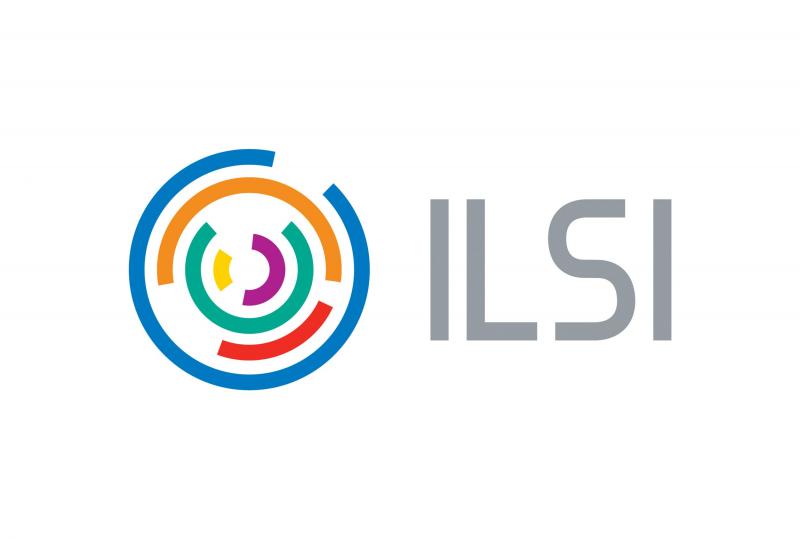Research Projects
Current Projects
Clinical Use of Bulk Drug Substances Nominated for Use in Compounding by Outsourcing Facilities
The University of Maryland is collaborating with the Food and Drug Administration (FDA) to identify bulk drug substances ordered as compounded medications for patients or for “office stock”. In particular, we are interested in how bulk drug substances, after being compounded by outsourcing facilities, have been used or are currently being used (e.g. the bulk drug substance is made into eye drops to treat post-operative inflammation).
Using mHealth to measure Impact in Functionality Behavior, Activity and Sleep Patterns in Children and Adolescents Treated with Psychotropics
This project aims to leverage the power of mobile technology to address three primary objectives: (1) fill the gap in the capture of behavioral, functional and activity data; (2) ease the burden on patients, caregivers, and providers struggling to capture relevant and actionable data related to treatment and care management; (3) identify severity of behavioral changes after treatment initiation or change, rates of adverse events/secondary effects, along with patterns of medication use and adherence. The ultimate goal is to integrate this data with larger data systems and existing data sources to support changes in labeling or in practice patterns.
Biocompatibility Studies of 3D Printed Dental Devices
Additive manufacturing (3D printing) has begun to enable the fabrication of patient-specific medical devices, such as surgical guides used in dentistry. FDA and the University of Maryland are collaborating to verify that certain dental devices manufactured by 3D printing are biocompatible. This study will inform FDA reviews regarding the likelihood that novel 3D printing methods of medical (dental) devices will cause allergic, inflammatory or other toxicological reactions in patients. Furthermore, our work may assist FDA in guiding medical device manufacturers to prevent serious adverse events. These findings are expected to directly improve quality assessment and control of a new generation of medical device products manufactured right at the bedside that are designed to meet individual patient needs.
An Introduction to the Science of Clinical Outcomes Assessment (COA) A-COA Online Continuing- Education Series
The science of clinical outcomes assessment (COA) is of growing interest and has become important to medical product development. COA involves understanding the patient’s view of illness and treatment, and gathering how the patient feels and functions. To understand if, for example, a treatment improves a patient’s pain, ability to perform daily activities, or quality of life, measures must be rigorous, whether collected from the patient, clinician, or caregiver’s perspectives. Thus, FDA staff and reviewers, and industry staff must be well versed in the science of COA. However, most educational programs on COA are not easily accessible to working professionals.
Development of Diagnostic Biomarkers for Determination of Traumatic Brain Injury
The scope of the work will leverage preliminary data in the TBI model2,6 as well as already developed LC-MS/MS-based methodology to enable the characterization of our two priority biomarker candidates: PE(P-36:4) and PE(38:6) as diagnostic biomarkers of TBI.
The group will provide critical information towards establishing a context of use for one or more lipid biomarkers to serve as minimally invasive diagnostic biomarkers to determine TBI and/or determine clinical trial inclusion for the drug development of therapeutics for TBI.
At the conclusion of these studies, our culminating overall goal is to submit a letter of intent (LOI) for the biomarker qualification for one or more of our priority biomarker candidates (PE(P-36:4) and PE(38:6)) as diagnostic biomarker(s) for determination of TBI, which may also be used as inclusion criteria for clinical trials of therapeutics to mitigate TBI.
Improving Efficacy and Safety of Pathogen Inactivation Strategies for Platelet Transfusion
Platelets are used to treat or prevent bleeding. Because platelets are usually stored at room temperature, they are associated with a higher risk of bacterial contamination compared to other blood products. Blood collection establishments and transfusion services must take measures to mitigate that risk. One of these measures can be the use of pathogen-reduced platelet products. Currently approved pathogen reduction methods involve incubation of the platelet bag with a chemical and illumination of the bag with ultra violet light. This treatment is intended to inactivate any potential pathogens in the platelet bag. This study will evaluate how well pathogen reduced platelets control bleeding when many blood products are needed to stop active bleeding. Specifically, the current study will evaluate how well pathogen treated platelets restore platelet function and control bleeding in patients undergoing open heart surgery on cardiopulmonary bypass. Cardiopulmonary bypass alters platelet function and the transfusion of functional platelets, together with other blood products, is often required to control bleeding post-operatively. The efficiency of patients’ blood coagulation will be compared in patients who received either a pathogen-reduced platelet product or a conventional platelet product.
Trace Metals and their Impact on Protein, Quality, Safety, and Efficacy
Trace metals, such as iron, copper, and zinc, can be found nearly everywhere in varying degrees. In pharmaceutical products, they are found as leachables from the container closure system, the buffer system used, and reactions in their presence can be catalyzed by exposure to light, heat, agitation or freeze/thaw cycles. These metals may damage biotechnology products via fragmentation and aggregation, and should therefore be analyzed as accurately as possible to ensure product quality. Aggregated proteins can trigger immunogenicity and serious adverse events, including death in patients. Trace metals also contribute to biological disease states and have been targets for various therapies. Therefore, we will analyze these metals in products and biological samples and determine their propensity for damage. This data will allow reviewers to better ensure product quality, safety, and efficacy, and contribute to science-based decision-making.
Solid State Properties of Spray Dried Dispersions
To yield sufficient oral drug bioavailability, poorly soluble drugs often require “enabling formulation technology”. Spray dried dispersions (SDDs) are one such enabling technology. SDDs exhibit poor flowability, small particle size, and low bulk density. Hence, capsules are often not viable, such that dry granulation is typically required to fabricate tablets from SDDs. Manufacturing tablets of SDDs requires powder compaction, at each the slugging (or roller compaction) stage and the tableting stage. Hence, compaction is a major unit operation for formulations of poorly soluble drugs that employ SDDs. However, emerging observations across the industry point towards high sensitivity of tablets from SDDs to compaction factors. There is a need to understand the solid state compaction properties of spray dried dispersions.
Tablet compacts will be manufactured using a compaction simulator, where compacts will be made of SDDs or simple mixture of drug an polymer (i.e. not spray dried dispersions). Drug will be itraconazole. Polymer will be various grades of hydroxypropyl methylcellulose acetate succinate (HPMCAS). A full factorial design will be carried out to assess impact of polymer type, compaction speed, and compaction thickness on solid state properties of spray dried dispersions. Compacts will be characterized with respect to their solid state compaction properties, to elucidate the effect of spray drying. Results are expected to yield insight into compact integrity, including its sensitivity to compaction variables, which will contribute to product quality of these complex formulations.
Engineering Quality Control into Biomanufacturing of Extracellular Vesicle-based Products
Extracellular vesicles (EVs), including exosomes and other subtypes, have emerging commercial potential for use as cell-derived therapeutics which necessitates development of a specific regulatory approach by the FDA. Over 150 clinical trials involving EVs are ongoing as of May 2020 (clinicaltrials.gov), yet there are currently no quality control standards for EV biomanufacturing that would enable validation of a potential commercial product. The goal of this project is to fill this gap as it relates specifically to mesenchymal stromal cell (MSC)-derived EVs, which are heavily cited in the academic literature as useful for a variety of therapeutic applications and are currently under investigation in several clinical trials.
Electrochemical Microsensors for Rapid Assessment of Metabolite, Nutrient, and mAB Titre in Biologics Production
The vast majority of biopharmaceuticals in the market today are monoclonal antibodies and their efficacy relies on the antibody’s ability to bind to antigens including infectious agents, cancer receptors, etc. These antibody drugs are synthesized by genetically engineered mammalian (Chinese hamster ovary, CHO) cells and cultivating these cells in large bioreactors. The development of the production process and the manufacturing operations have great influence on the yield of antibody and its quality. Process variables such as pH, dissolved oxygen level, and nutrient levels in the reactor fluids can lead to highly productive living cells producing high quality product or the opposite, the generation of low yielding cells that produce damaged antibodies. This project addresses the need for rapid, scalable, and informative analytical measurements that report on the processing conditions in these reactors. The method, “mediated electrochemical probing (MEP)” was pioneered by our groups over the last five years and there is widespread interest within the biomanufacturing industry for its use. We have built a robust sensor and gained new insight on a variety of samples, including those of relevance to the FDA: amino acids, cell culture media, and cells. MEP enables rapid, low cost, electrochemical measurement of raw materials, cell growth, and product formation. The data obtained is rich and informative. We will use MEP to interrogate CHO cell cultures, linking its measurements to cell growth and productivity data.
Evaluation of the REMS Programs for Psychiatric Medication
A Risk Evaluation and Mitigation Strategy (REMS) is a drug safety program that the U.S. Food and Drug Administration (FDA) can require for certain medications with serious safety concerns to help ensure the benefits of the medication outweigh its risks. REMS programs may require that extra safety measures are performed by healthcare professionals and patients to ensure the drug is used safely. These requirements may have unintended consequences on patient access or cause burden on various stakeholders (e.g., hospitals, doctors’ offices, clinics and pharmacies). Because of these issues, it is important to carefully look at the REMS programs to make sure they help patients and minimize unintended problems.
Assessment of Patient Tolerance for Risk Associated with High Intensity Focused Ultrasound (HIFU) for the Ablation of Prostate Tissue
Prostate cancer is the most commonly diagnosed solid organ cancer and the second leading cause of cancer death in American men. Conventional treatment for localized prostate cancer includes surgery (radical prostatectomy) or radiation. Both treatments have well known long-term cancer outcomes and side effect profiles. The most common side effects include sexual issues such as erectile dysfunction and urinary issues such as leakage. Dissatisfaction with side effect profiles has led to calls for newer methods of prostate cancer treatment. High intensity focused ultrasound (HIFU) is a tool that destroys (ablates) prostate tissue. It is minimally invasive and has an attractive side effect profile. The side effect profile is well-known, but there are few data on the cancer effectiveness in the U.S. population.
Metabolism-based DDI and Liver Toxicity of Drug Candidates in COVID-19 Treatment
This project investigates how, as of publication, COVID-19 treatment relies primarily on repurposing of existing drugs approved for other clinical usage or investigational compounds that have not been fully evaluated for their safety and efficacy. Many patients who are elderly and/or have pre-existing conditions such as cardiovascular disease and diabetes, often take multiple medications simultaneously. Thus, the potential for unexpected drug-drug interactions and side toxicity in these vulnerable COVID-19 patients is high. Given that liver is the main organ responsible for drug metabolism and drug-induced liver injury is one of the top reasons leading to drug development failure, we will use a three-dimensional (3D) human liver model to investigate the potential liver toxicity and drug-drug interactions of drug candidates used in the current COVID-19 treatment.
Data-informed Models to Identify Optimal Opioid Use Disorder Treatment Trajectories
The primary goal of this project is to support the FDA's CDER effort to “develop a comprehensive systems model of the opioid crisis” by providing summary-level data that can be incorporated into the model using a diversity of datasets that cut across the privately and publicly-insured.
Hyperspectral Interferometric Scattering Microscopy for Characterizing Nanoparticle-based Therapeutics
Nanoparticle based drugs are drug formulations where the active drug substance is formulated into nanoparticles with sizes in the range of 100 – 1000 nanometers. These unique drugs have been found in several cases to be significantly more affective cancer therapeutics compared to conventional small molecule drugs. However, nanoparticles adopt a broad range of particle sizes and characteristic due to the larger number of drug molecules per nanoparticle. This contrasts small molecule and protein drugs, where all drug molecules are identical copies of each other. The size distribution of nanoparticle drugs determines how they interact with biological tissue and thus nanoparticle size is a critical quality attribute of these drugs that must be characterized as part of the FDA chemistry review. Characterizing particle size distribution is particularly important for generic nanoparticle drug FDA applications, where applicants should demonstrate their drug is highly similar to the originator drug. Conventional optical microscopy methods are not capable of accurately measuring the size distribution of nanoparticle drugs, making it difficult to establish similarity of a generic drug to an originator. New optical microscopy tools must be developed to characterize generic nanoparticle drugs.
Understanding Safety Concerns with IV Misuse and Abuse of Opioids in Deterrent Formulations, Phase 1
Several tablet form opioid products have been approved that contain abuse deterrent (AD) formulations to prevent crushing and nasal misuse. For example, Endo Pharma began marketing reformulated Opana ER (oxymorphone hydrochloride extended release) oral tablets in 2012, which contained a new “crush-resistant” excipient, high molecular weight polyethylene oxide (HMW-PEO). The post-marketing outcomes of the Opana ER reformulation have been both unexpected and concerning, as epidemiologic data revealed a shift in misuse patterns following reformulation from nasal to intravenous injection. This shift was also accompanied by cases of a potentially fatal blood disorder called thrombotic microangiopathy with hemolytic uremic syndrome and an outbreak of HIV in southern Indiana due to needle sharing. These outcomes led to the calling of a joint meeting of the anesthetic and analgesic drug products and the drug safety and risk management advisory committees in March of 2017, and ultimately led to the withdrawal of Opana ER from the US market. Among the many considered causes, the excipient (HMW-PEO) used in the product was thought to be a major factor leading to the rare blood disorder. Yet, similar PEO as well as other high molecular weight polymers have also been used in other opioid tablet products, raising concern over the general safety of this category of excipients, if misused via non-intended intravenous administration. Our efforts into understanding the toxicological mechanism in translational pre-clinical studies are so far consistent with observations in humans in settings of acute intravenous HMW-PEO exposures. Therefore, it remains a critical and unmet regulatory challenge to understand the toxicity of several existing abuse deterrent tablet formulations to better determine how to regulate these products, limit public health risks and if needed optimize these formulations to prevent the additional adverse consequences of their misuse.
Evaluating the Utility of Negative Control Adjustments and Methods of Addressing Unmeasured Confounding in Using Real-World Data
Randomized controlled trials (RCTs) are the gold standard for evaluating the efficacy and safety of a treatment. However, the expensive costs to conduct RCTs coupled with the generalizability of findings of RCTs to real-world settings have made the use of real-world data in studying long-term drug safety and effectiveness research more popular. Nevertheless, a major concern in using real-world data is the presence of unaccounted biases (e.g., selection bias, information bias) and confounding that may threaten the internal validity of the study results.
Communicating About COVID-19 Testing to Underrepresented Populations
One of the FDA regulatory science priority areas is to develop methods and tools to improve its regulated products’ evaluation after their approval for public use. It is important for the FDA to include subpopulation groups in this evaluation based on age, sex, race and ethnicity. Part of this evaluation is to assess how best to provide comprehensive and useful communications about the regulated product.
Measurement of Metal Ions and HPHCs in ENDS
This project will use the electronic nicotine delivery systems (ENDS) aerosolization machine previously developed by the research team to expose normal human cells to complex ENDS aerosol mixtures and determine the physiological and pathological effects from exposure.
Evaluation of the REMS Programs for Psychiatric Medications
This project will focus on the REMS programs for three psychiatric medications used by community psychiatrists. These medications are clozapine, esketamine (Spravato) and olanzapine for extended-release injectable suspension (Zyprexa® Relprevv™)
Integrating patient and consumer-generated discursive data to inform and enhance FDA One Health Initiative communication strategies
The primary goal of this research project is to amplify FDA’s One Health Initiative by gaining a better understanding of the public’s perception of COVID-19 and how it is related to humans, animals, and the environment.
Evaluation of Metal Ions in Electronic Cigarette Aersol Condensates and Determination of their Effects on Oral Keratinocytes
The goal of year 1 of the proposal is to develop a bioanalytical approach to identify the metal ions and HPHCs present in ECACs that are taken up by normal oral keratinocytes.Our bioanalytical strategy to measure the repertoire of EC hardware-derived metal ions and HPHCs present in ECACs and identify cellular uptake in oral keratinocytes will inform regulatory agencies charged with documenting the toxicological profile of new ECs prior to market authorization.
hERG Channel Pharmacology for CiPA
The scope of work is to perform applied regulatory research in ion channel pharmacology. The Trudeau lab will collaborate with the FDA as part of the Comprehensive in-vitro Proarrhythmia Assay (CiPA) initiative. Our part of the collaboration will be to measure dose-response curves of 7 different drugs (at 4 different concentrations) that inhibit hERG (KCNH2) potassium channels, expressed in stably transfected HEK293 cells using whole-cell patch-clamp electrophysiology at physiological temperatures. Dr. Matthew Trudeau of the University of Maryland, Baltimore is contributing to this research, along with FDA collaborators David Strauss, Ruth Barratt, Wendy Wu, and Zhihua Li.
Improving FDA Health Communications with Older Women Regarding FDA-Regulated Products
It is important that FDA effective reach out to older women, including considering the financial costs of effectively reaching women. The investigators will conduct twelve (12) exploratory focus groups among US women aged 50 years and older (8-10 women per group). The plan is to this study older women by age, in order to see how types of communication are preferred by older women of various ages. These focus groups will take place in the Washington, DC/Maryland/Virginia area at times that best accommodate participants’ availability. The investigators will strive for socioeconomic and demographic diversity among participants in these focus groups.
Focus groups will respond to the research questions regarding perceptions, motivations, attitudes, and behavior concerning use of FDA-regulated materials. Some questions will also address the role some of these older women play as caregivers to help the investigators better understand whether the health information needs vary between older women who seek health information for self-care, compared with those who seek health information to care for others.
Recent Projects
Development and characterization of an animal model of perinatal infection with Zika virus: assessment of long-term neurological deficits
Zika virus (ZIKV) is an emerging mosquito-borne pathogen. Between 2014 and 2017 Zika spread over 84 countries infecting >2 million people. In the US alone, over 35,000 people were infected by Zika virus including 3500 pregnant women. Understanding and measuring the potential sequelae is critical to assessing the safety and efficacy of prospective therapies or vaccines, particularly as therapies may not clear immunoprivileged sites such as the CNS effectively. This study will support animal modeling of long term consequences of disease, which may help alert clinicians to possible sequelae and help provide timely support to minimize the long-term neurological consequences of infection. The results will provide guidance to the product developers as well as the reviewers reading the parameters that need to be monitored in animals to model product efficacy.
Quantification of Surface Defects that Complicate Cleaning of 3D Printed Medical Devices
A key goal is to study AM printed products and develop process controls for safe manufacture and confirm chemical and mechanical structure. Additively manufactured products are now being manufactured as dental surgery guides, for use as cell culture expansion scaffolds and for drug-release combination products. AM can be conducted without qualification of feedstock materials, quality systems management over final finished products or premarket regulatory review. Uncertainties about post processing of AM parts can affect product chemistry and mechanical integrity. Our work will inform FDA reviewers about potential hazards or practices likely to be safe.
Biocompatibility in Additive Manufacturing
Some medical devices not subject to premarket review by FDA are being fabricated by clinicians at the point-of-care using consumer grade 3D printers. However, any medical device in physical contact with a patient should be biocompatible to insure safety. No studies have been published that relate specific 3D manufacturing process parameters to standard industry measures of biocompatibility. Recognizing this, Dr. Lex Schultheis and his research team investigated whether a specific ABS feedstock that was expected to be biocompatible for permanent contact with skin and mucosal membranes would be altered by 3D printing, and thereby change biocompatibility in the final finished medical device.
Transdermal Drug Delivery Systems-Fentanyl: In Vitro Studies
Dr. Audra Stinchcomb is building on upon the currently FDA-funded project grant NIPTE-U01-MD-2015-001 titled, "Transdermal Drug Delivery Systems-Fentanyl" (program officer representative: Caroline Strasinger). This currently funded project is focused on human in vivo testing. The goal is to understand ways to label drug delivery rates from patches, as current dose labeling is not consistent among patch products. In vivo human studies employ fentanyl patches to determine delivery rates from pharmacokinetic parameters, as well as the residual drug amount left in the patch at the end of the wear time. This research team is creating a database of controlled human studies. In vitro studies are proposed here in order to assess if in vitro studies can mimic ongoing in vivo studies, in terms of delivery rates. In vitro studies would employ the same products that are being evaluated in vivo in humans. This correlation analysis will help develop in vitro tests to predict patch delivery rates.
In vivo Pig-a gene mutation assay
A workgroup of the International Life Sciences Institute (ILSI) Health and Environmental Sciences Institute (HESI) is developing an Organisation for Economic Co-operation and Development (OECD) Test Guideline (TG) for the in vivo Pig-a gene mutation assay. The TG will foster regulatory acceptance of the assay for conducting safety assessments.



























